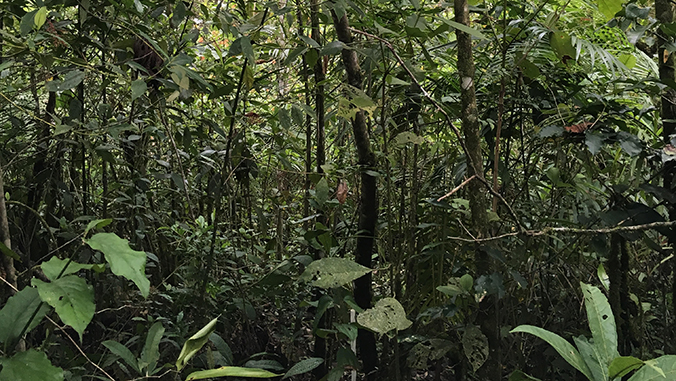
A new study has concluded that recovering secondary tropical forests don’t last very long. Secondary forests are young forests that colonize an area that had been cleared for agriculture or another purpose before being allowed to revert back to a forest.
The study was co-authored by Rakan Zahawi, director of the University of Hawaiʻi at Mānoa Lyon Arboretum, and published in the September issue of Conservation Letters. It has the biggest time scale and the greatest spatial resolution of any studies that have looked at secondary tropical forest persistence to date.
Using data and aerial photos gathered in the secondary forests of Costa Rica from 1947 to 2014, the research team found that secondary forests persisted for an average of only 20 years before being converted back to other land uses, typically agriculture. Eighty-five percent of secondary forests were re-cleared before they reached 54 years old. Riparian forests, strips of forests along creeks and streams, and larger forest fragments, were found to have lower risks of deforestation.
“This is one of the first studies to ask how long secondary forests persist, and the results are striking,” said Zahawi. “It takes much longer than 20 years for a secondary forest to optimize its carbon stocking potential, or to provide habitat for many forest species. This is a big problem for large-scale restoration and conservation policy.“
Zahawi says Costa Rica was an interesting case study in part because of its model Payments for Ecosystem Services program, which pays farmers to keep forested land forested, and because it is one of the countries that has pledged to restore 1 million hectares of degraded land by 2020 under the Bonn Challenge. “The benefits of such restoration initiatives all depend on these forests persisting after they have been established, and this research shows that they are not doing so to nearly the degree we assumed they would do,” he said.
Zahawi says a key question now is to assess whether this pattern is widespread throughout the tropics as only a few studies have evaluated forest persistence. The few that have all point to a similar conclusion, and that finding has widespread implications for conservation policy.
Zahawi collaborated with researchers from the Missouri Botanical Garden, University of Maryland Baltimore County and Washington University in St. Louis on this project.

